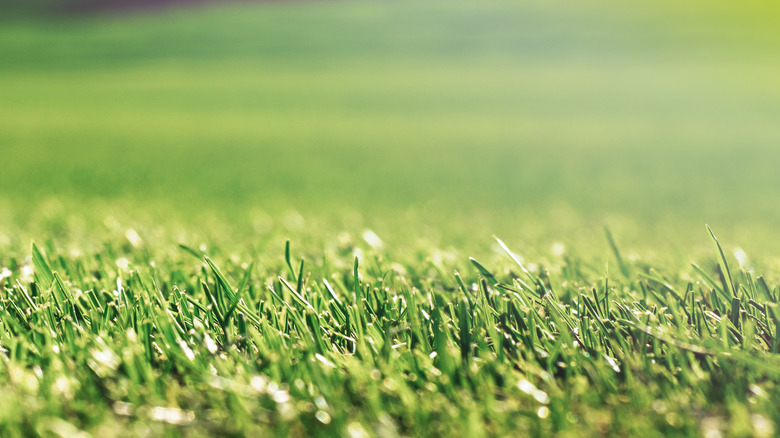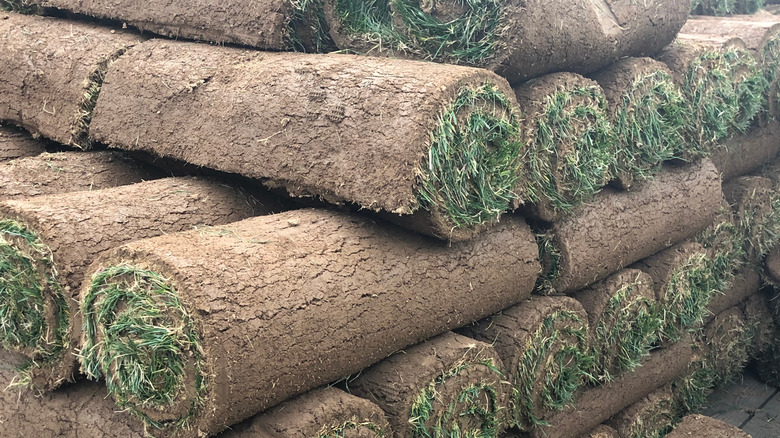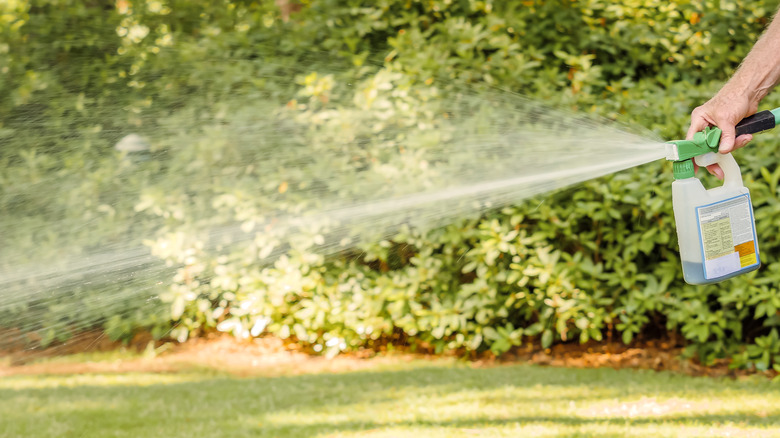What Is Bentgrass (And How To Stop It From Creeping Into Your Lawn)
Bentgrass is a creeping, cold season grass commonly used for golf courses and parks. It's also often found in older lawns that were initially seeded with it. The issue is that once bentgrass is established, it's pretty challenging to fully eliminate it. Luckily, you can use both natural and chemical methods to eliminate bentgrass from your yard.
This weedy grass has a shallow root system that slowly chokes out your normal turf. In addition to its ability to suffocate your beautiful lawn, it also excels at inviting disease, pest infestations, and soil instability via drought susceptibility. Bentgrass thrives in cool and moist environments, but doesn't deal well with heat stress. If you've ever noticed large brown splotches in your lawn that seem to be popping up out of nowhere, you might be able to chalk it up to bentgrass. Under the right conditions, this creeping grass can overtake a lawn pretty easily. When it dies, those large brown patches become susceptible to weeds, which opens up a host of other problems when trying to get your lawn back into tip-top shape.
Non-herbicide options
Smaller patches of bentgrass can be removed manually through weeding, but if it has taken over a majority of your lawn, you'll have to resort to more intensive measures. Luckily, you don't have to jump straight into using tons of herbicides. Your first option is to completely remove your lawn, which is time-consuming, costly, and depending on the severity of the infestation, could be a bit extreme. This allows you to start fresh with all new sod and seed. Regular lawn aeration also helps prevent bentgrass, as it negatively impacts its growth since it spreads through stolons in the thatch layer (a layer of roots and dead grass) above the soil line. Lastly, don't feel obligated to give your lawn frequent mowings. This just creates favorable conditions for the bentgrass to grow.
Alternatively, you can work with the existing lawn, rather than trying to rid it of all bentgrass. Bentgrass is incredibly susceptible to disease and pests, so your main goal should be to introduce natural pest control, like beneficial nematodes, as well as using natural fungicides, to keep it disease-free and healthy.
Picking the right herbicide
When non-chemical methods don't do any good, it's time to resort to more drastic measures. The first method involves spraying individual spots of bentgrass with a non-selective herbicide. This method kills the grass, and also any other plant life that it happens to come into contact with. This means it should only be applied where the bentgrass is present and actively growing. When applying, spray about half a foot or more beyond the patch to make sure you're getting the bentgrass stolons that it spreads through. You'll want to do at least two applications, and once the grasses die off, you can re-sod that area.
The second method involves using a selective herbicide, which is formulated to work against certain types of plants, like weeds and bentgrass, without harming other plant species. Always read the label to make sure you're using the appropriate herbicide. When all else fails, you can always hire a lawn care professional or landscaping company that specializes in renovating lawns and removing invasive grasses.


